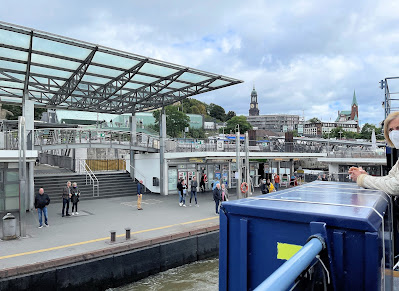
|
| Even Google honored the German federal election. |
Germany has a mixed electoral system, and voters have two votes. 299
deputies are directly elected in their electoral districts with a "first"
vote. This is the same as in the States or the UK. However, Winston Churchill already mused, "It isn't one hundred percent democratic, but it works."
Right he was, for all votes for the smaller parties
fallen unter den Tisch (are lost).
To remedy this "undemocratic "situation, Germany's electoral law stipulates that another 299 deputies are added to the Bundestag according to the percentage of "second" votes a party has gained.

|
| Darker means a higher percentage of votes (©Der Spiegel) |
Here are Germany's 299 electoral districts. By now, you know that for the two major parties,
black stands for the Christian Democrats, and red for the Social Democrats. Germany's south and west voted black, while the north and the Ruhr district
are traditionally red. Here and there, the direct mandate fell to the Greens,
so in electoral district 281 Freiburg (what else?). Those blue constituencies in Saxonia and Thuringia are unpleasant, where the right-wing
Alternative für Deutschland got the majority of the votes cast and the
direct candidate elected.
These two mechanisms try to make the election result nearly one hundred
percent democratic but have the unpleasant side effect of swelling the
Bundestag. The number of deputies increased from nominally 598 deputies to 709
in 2017 and now to 735 or from XL to XXL. All election law reforms to
decrease the number of seats have failed so far. Note: No deputy will vote for
his/her own suppression.
Here are the final provisionally results of 2021, showing winners and losers.

|
| Angela's reaction to her party's losses (©AP) |
 |
| (©ntv) |
On the evening of the election, Chancellor Angela Merkel at a party rally with
the wannabe chancellor Armin Laschet (CDU). After 16 years at the helm, the
chancellor looks tired. Did she support him enough?
*















































